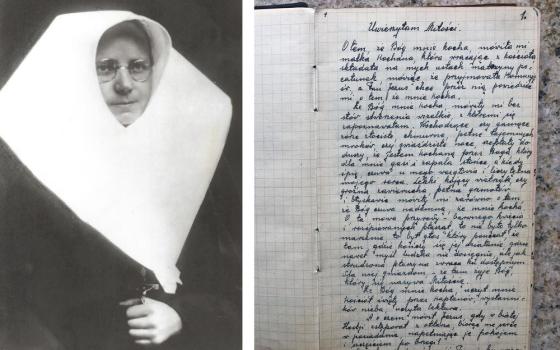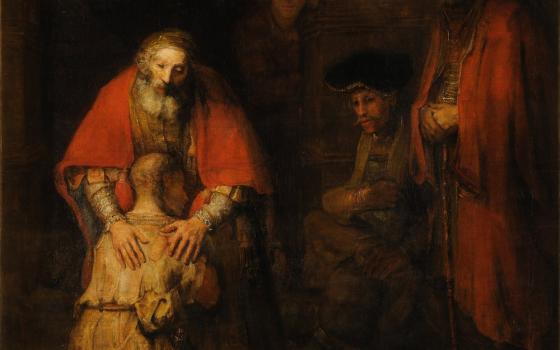Pope Francis passes an image of St. Nicholas after celebrating Mass in Bari, Italy, Feb. 23, 2020. (CNS photo/Paul Haring)
ROME — A thief broke into the Basilica of St. Nicholas in the southern city of Bari overnight, stealing a gold ring from a finger of a statue of the saint, who is venerated by Catholic and Orthodox Christians and whose remains attract many pilgrims from Russia to the Italian church, officials said on Tuesday.
Corriere della Sera daily quoted police in Bari as saying video surveillance cameras showed a hooded and masked man breaking open a metal gate to gain entrance to the basilica before dawn on Tuesday. Church officials say the thief stole money left by faithful in a collection box and opened, without damaging anything, a glass case that displays a tall statue depicting the saint.
Besides the ring, the thief made off with a book, decorated with silver, that the statue of the saint held in one hand, authorities said.
Nicholas is much revered in Bari, an Adriatic port city, and his popularity is considered a bridge between West and East.
Advertisement
"With this gesture, the raw nerves of the faithful and culture of Bari have been touched,'' Bari Archbishop Giuseppe Satriano told TV2000, an Italian Catholic television station. He contended that the stolen objects would be hard to sell since they are well-known and catalogued.
The theft is a "sacrilege, an obscene act,'' said Bari Mayor Antonio Decaro.
The basilica is a popular pilgrimage destination, especially for visitors from Russia. In 2003, a statue of the saint was erected outside the church as a gift from Russian President Vladimir Putin.
Born in Turkey in the 3rd century, Nicholas is the patron saint of sailors. As a young man, Nicholas boarded a ship to journey to the Holy Land, and on the way back, the ship was threatened by a big storm, according to the Vatican. After he prayed, the waves died down. Sailors from Bari eventually acquired his remains and brought them to the southern Italian city in 1087, where they were later buried in a crypt of a new church.





